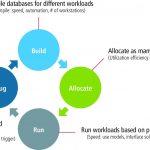There’s always a lot of activity in EDA to innovate and refine specialized algorithms in functional modeling, implementation, verification and many other aspects of design automation. But when Google, Facebook, Amazon, IBM and Microsoft are pushing AI, deep learning, Big Data and cloud technologies, it can be hard not to see… Read More
Tag: bernard murphy
AI and the black box problem
Deep learning based on neural nets and many other types of machine learning have amazed us with their ability to mimic or exceed human abilities in recognizing features in images, speech and text. That leads us to imagine revolutions in how we interact with the electronic and physical worlds in home automation, autonomous driving,… Read More
The Unreasonable Effectiveness of Neural Nets
In 1960, the Nobel-winning theoretical physicist Eugene Wigner published an article titled “The unreasonable effectiveness of Mathematics in the Natural Sciences”. His point was that, at least in the physical and chemical worlds, mathematics is able to describe the behavior of nature to an uncannily accurate degree, which… Read More
Microsoft, FPGAs and the Evolution of the Datacenter
When we think of datacenters, we think of serried ranks of high-performance servers. Recent announcements from Google (on the Tensor Processing Unit), Facebook and others have opened our eyes to the role that specialized hardware and/or GPUs can play in support of deep/machine learning and big data analytics. But most of us would… Read More
Power Exploration at RTL Design with Mentor PowerPro
There was a comment recently that design for low power is not an event, it’s a process; that comment is absolutely correct. Power is affected by everything in the electronic ecosystem, from application software all the way down to layout and process choices. Yet power as a metric is much more challenging to model and control than … Read More
Synopsys Hosting Formal Methods in CAD Conference Next Week
FMCAD (Formal Methods in Computer Aided Design) is a technical conference with a 20-year pedigree. This is a conference for serious formal methods teams. Key notes are from Berkeley and UCLA, committee members are all formal heavyweights and best I can tell, there is no exhibitors area.… Read More
Good AI
A hot debate recently, promoted notably by Elon Musk and Stephen Hawking, has explored whether we should fear AI. A key question centers around the ethics of AI – how we can instill ethical values in intelligent systems we will build and how, I hope, we can ensure we use those systems ethically. This is not an academic question – autonomous… Read More
Mentor Webinar on Power Exploration for Optimizing Power
There are a lot of clever techniques to automatically find and even implement methods for register gating and memory gating, but the bulk of power-saving still depends on designer and architect insight based on expected range of use of a device, complemented by practical use-case simulations. Of course this team needs to be able… Read More
Low Power Design – a Server Perspective (Webinar)
Most of what you have read about design for low power has probably focused on mobile devices where power consumption constraints tend to outweigh performance objectives. These devices use aggressive power switching strategies, based on the reasonable assumption that parts or all of the device can be powered down at any given … Read More
Emulation as a Multi-User Shareable Resource
One of the great advantages of emulation is that runtimes are much faster than for simulation – sufficiently fast that you can really debug hardware together with software for comprehensive use-case testing. A not so great aspect is that emulators are expensive and, until relatively recently, not particularly easy to share across… Read More






